How Invasive Pests and Pathogens Across the U.S. Increase the Threats of Climate Change
Research shows that forest insects and diseases lead to nearly 50 million more tons of carbon dioxide in the atmosphere each year.
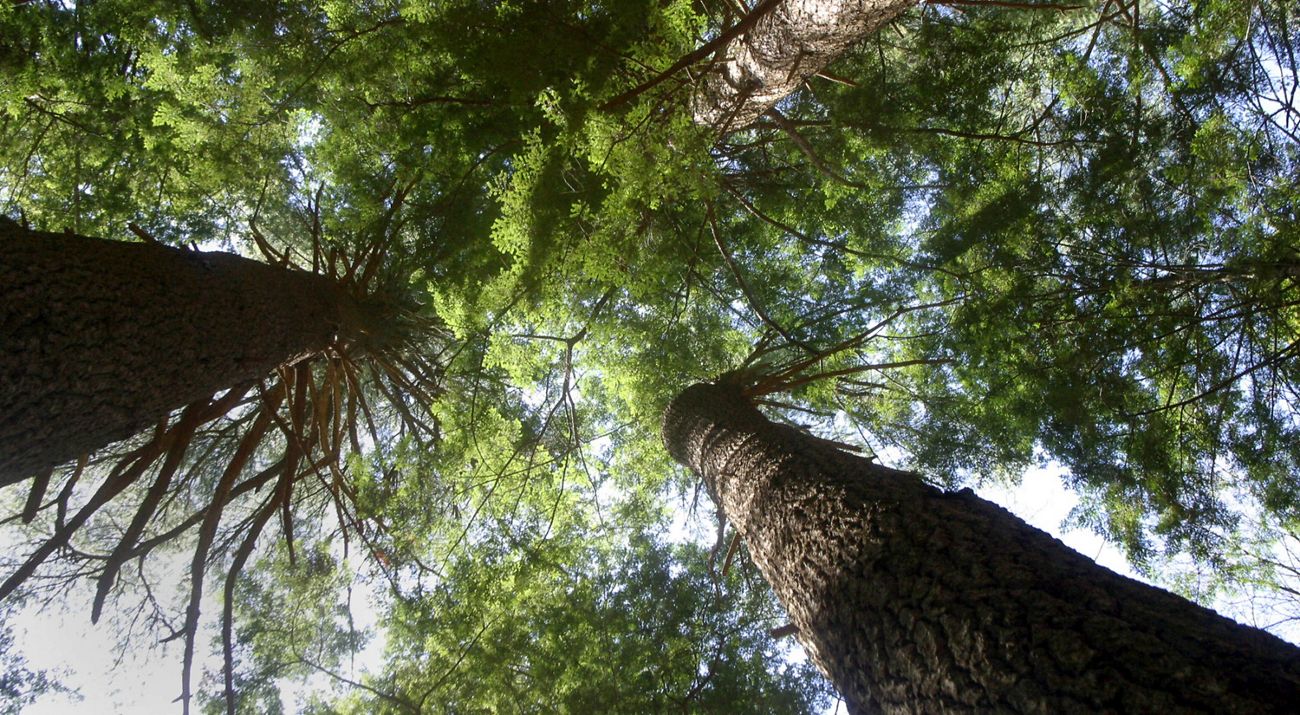
Media Contacts
-
Adrienne Egolf
The Nature Conservancy
Email: aegolf@tnc.org
Insects and diseases that damage and kill trees across the contiguous United States reduce our forests' ability to capture and store climate-changing carbon dioxide, according to a 2021 study.
The study, which was published in the journal Frontiers in Forests and Global Change, found that forests damaged by insects sequestered 69% less carbon than undamaged forests. Those affected by disease sequestered 28% less carbon. In total, the study found that the damage currently being caused by insects and diseases across the contiguous U.S. is reducing the sequestration potential of America’s forests by roughly 50 million tons of carbon dioxide each year—the equivalent of emissions from more than 10 million cars.
Quote: Leigh Greenwood
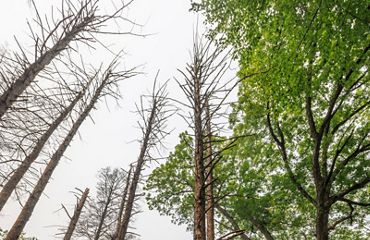
Climate change often makes trees even more susceptible to damage from insects and disease, which reduces a forest’s ability to sequester carbon which, in turn, worsens climate change. It’s a vicious cycle.
“America’s forests evolved to thrive alongside many insects and diseases,” said Leigh Greenwood, TNC's Director of Forest Pests and Pathogens Program and one of the study’s authors. “But over the past 200 years, the natural balance between forests and pests has been thrown off by the spread of non-native pests, unsustainable logging, fire suppression, and other poor land management practices. Climate change often makes trees even more susceptible to damage from insects and disease, which reduces a forest’s ability to sequester carbon which, in turn, worsens climate change. It’s a vicious cycle.”
How We Can Control Invasive Species
TNC works across borders and with a wide range of partners to reduce the impact of invasive pests and pathogens on forests.
-
Improved Forest Management
Implementing improved forest management practices, such as ecological thinning and prescribed fire, can help increase the resilience of forests by promoting biodiversity and variations in tree age and spacing. See examples of improved forest management strategies.
-
Strengthening Policies
Stronger regulations on imported plants for nurseries and enforcing and improving treatment standards for solid wood packaging materials such as pallets and crates can help prevent additional non-native forest pests from entering North America. How we can stop the spread of invasive pests in the global supply chain.
-
Advancing Research
TNC, the USDA Forest Service and other partners are leading a uniquely multidisciplinary approach to monitor, research, and breed pest-resistant American beech, American elm, Eastern hemlock, and three of the most imperiled North American ash species. See how scientists are racing to save some of our most iconic tree species.
-
Slow the Spread Programs
Awareness campaigns and programs like Don't Move Firewood can help reduce the movement of established pests across geographies. See how you can help.
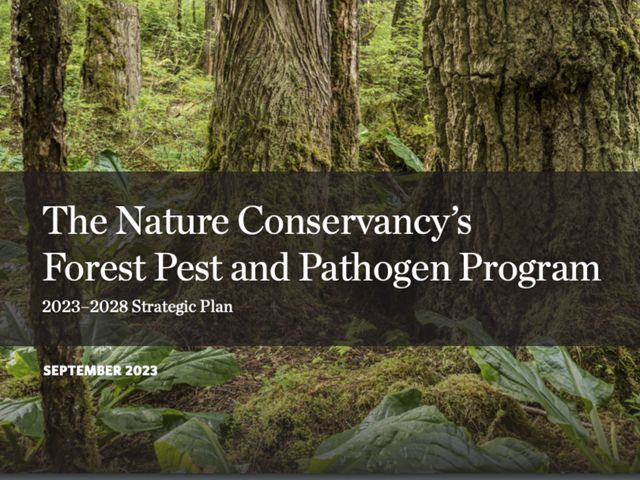
Strategic Plan
This plan outlines the most impactful and feasible opportunities for TNC to leverage both its own independent position, as well as the strengths of its public and private sector partners, to advance strategies protecting long term forest health. Download the Plan
Healthy Forests are a Natural Climate Solution
“Reducing the frequency and intensity of insect and disease disturbance presents a rare win-win opportunity to address one of the greatest ecological threats to North America’s forests and trees while also ensuring our forests provide the maximum contribution to climate change mitigation,” said lead author Brendan Quirion of Cornell University. “This research contributes to a growing body of evidence that demonstrates the importance of protecting forests to combat global climate change.”
Quote: Brendan Quirion
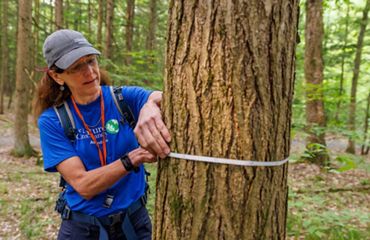
This research contributes to a growing body of evidence that demonstrates the importance of protecting forests to combat global climate change.
What are natural climate solutions?
Natural climate solutions are actions to protect, better manage and restore nature to reduce greenhouse gas emissions and store carbon. Forests provide much of that carbon-storage opportunity. Learn more about the science of natural climate solutions.
Combined with cutting fossil fuels and accelerating renewable energy, natural climate solutions offer immediate and cost-effective ways to tackle the climate crisis—while also addressing biodiversity loss and supporting human health and livelihoods.
Globally, natural climate solutions could deliver more than a third of the emission reductions needed by 2030 to avoid the worst impacts of climate change.
But native and non-native insects and diseases impact an average of 50 million acres in the U.S. annually—approximately 15% of the country's forest cover—harming one of our most promising pathways to fight climate change through natural climate solutions.
How Scientists Reached These Findings
The study was led by Brendan Quirion of Cornell University with a team of scientists from The Nature Conservancy, the USDA Forest Service, the Cary Institute of Ecosystem Studies, and Purdue University.
The scientists used data from the USDA Forest Service’s National Forest Inventory and Analysis Program to compare changes in carbon sequestration over a period of time between forests with insect or disease disturbances and forests with no evidence of disturbances. The authors found that forests impacted by insects sequestered 34 million less tons of carbon dioxide each year than undisturbed forests—equivalent to emitting carbon dioxide from more than 7 million passenger cars every year. Forests impacted by disease sequestered 13 million less tons of carbon dioxide each year—equal to the emissions from an additional nearly 3 million passenger cars.
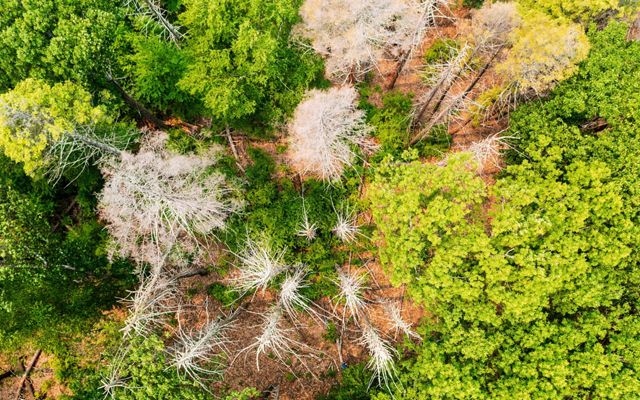
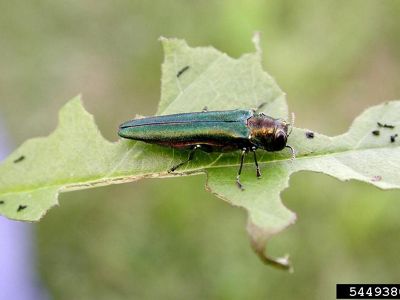
“Forests are an essential part of capturing carbon from our atmosphere,” said Grant Domke, a research forester with the USDA Forest Service and study co-author. “Using the USDA Forest Service’s National Forest Inventory data, this study attributes changes in carbon sequestration to insects and diseases which will inform efforts to mitigate the impacts of disturbance on forests across the nation.”
“We know that invasive forest insects and diseases are a serious threat to forest health and biodiversity, but this study now shows that these insects and diseases can also have a significant impact on the ability of our forests to store carbon,” said study co-author Gary Lovett, Senior Scientist Emeritus at Cary Institute. “Stronger measures by the federal government to reduce the accidental importation of forest pests and diseases would pay off by keeping our forests healthy while preserving forests’ ability to absorb some of our carbon dioxide emissions.”
Among the most damaging insects and diseases damaging and killing America’s forests are the emerald ash borer, which has killed more than 100 million ash trees across the US, primarily in the northeastern and midwestern states; Dutch elm disease, which has killed at least 43 million American elms in cities and forests across North America; and invasive shothole borers, a group of rapidly spreading small beetles killing urban, suburban, wildland, and orchard trees in southern California.
Karen Plaut, Purdue University’s Glenn W. Sample Dean of Agriculture, said: “Forests are vulnerable to many threats such as insects and diseases, but if we know the impact of these disturbances, we can better manage our forests and build resilience against climate change. Powerful data and collaborations such as this will lend to the development of new tools and strategies that strengthen our ecosystems.”
To view the full study, please visit:
Citation: Quirion BR, Domke GM, Walters BF, Lovett GM, Fargione JE, Greenwood L, Serbesoff-King K, Randall JM and Fei S (2021) Insect and Disease Disturbances Correlate With Reduced Carbon Sequestration in Forests of the Contiguous United States. Frontiers in Forests and Global Change. 4:716582. doi: 10.3389/ffgc.2021.716582
View on Frontiers in Forests and Global Change: https://www.frontiersin.org/articles/10.3389/ffgc.2021.716582/full
It is with sadness we recognize the passing of co-author Gary Lovett. He was a critical ‘voice for the forests’, assembling interdisciplinary experts and advancing science-based solutions to prevent the accidental importation of new forest pests, which he came to see as the most severe threat to forest health throughout the eastern US.
The Nature Conservancy is a global conservation organization dedicated to conserving the lands and waters on which all life depends. Guided by science, we create innovative, on-the-ground solutions to our world’s toughest challenges so that nature and people can thrive together. We are tackling climate change, conserving lands, waters and oceans at an unprecedented scale, providing food and water sustainably and helping make cities more resilient. The Nature Conservancy is working to make a lasting difference around the world in 83 countries and territories (39 by direct conservation impact and 44 through partners) through a collaborative approach that engages local communities, governments, the private sector, and other partners. To learn more, visit nature.org or follow @nature_press on X.